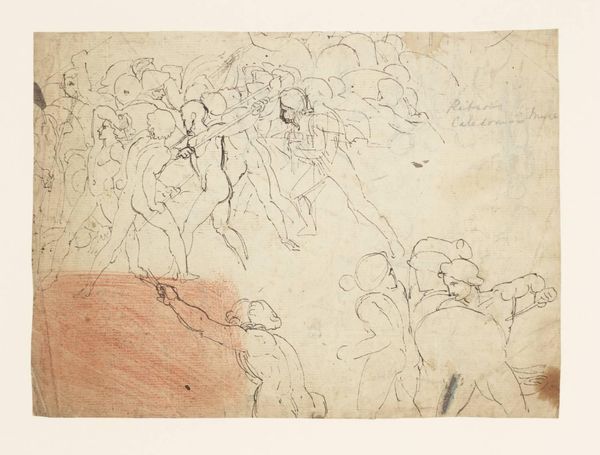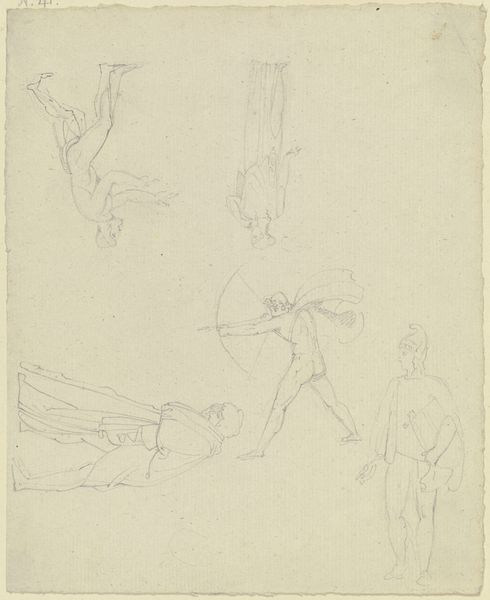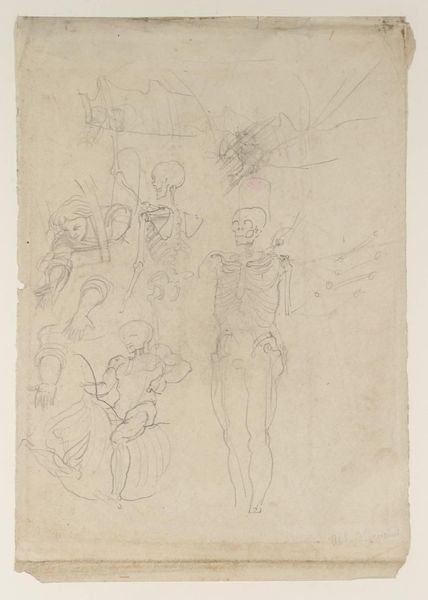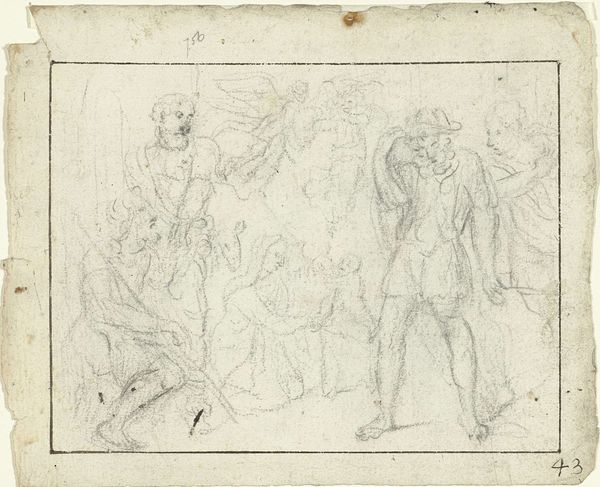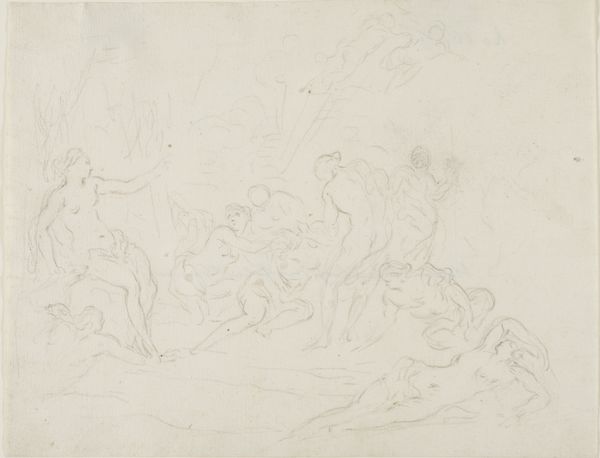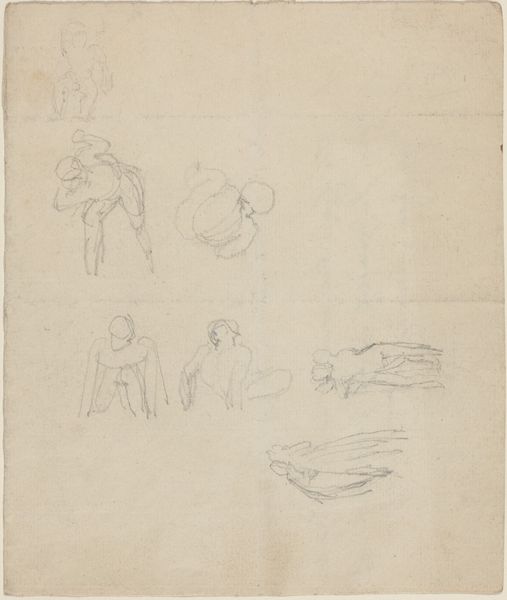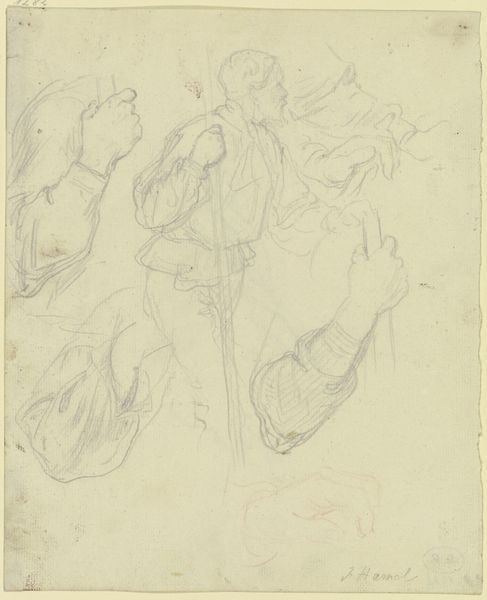
drawing, graphite
#
drawing
#
baroque
#
graphite
#
history-painting
#
nude
Dimensions: height 160 mm, width 164 mm
Copyright: Rijks Museum: Open Domain
Curator: Here we have Moses ter Borch’s “Two Sketches of Adam and Eve,” created around 1656 or 1657. It's a graphite drawing housed here at the Rijksmuseum. What are your initial thoughts? Editor: There's an undeniable vulnerability communicated through the use of nudes set within the implied Garden of Eden; it feels remarkably intimate, almost voyeuristic. The fleeting nature of a graphite sketch enhances this ephemeral quality. Curator: Ter Borch was indeed exploring a profound narrative. Baroque artists frequently turned to biblical scenes for their dramatic potential, reflecting religious sentiments and the relationship between humanity and divinity during the period. Ter Borch likely would have been working in context with the politics of the Dutch Reformation, too. Editor: The sketches remind me how heavily concepts of original sin and gendered narratives influence the politics of today; woman is born from man to lead him to downfall! I’m curious as to how his peers may have received these images; whether their bare forms and actions, taken outside the scripture itself, were radical in nature. Curator: The Dutch Republic fostered a flourishing art market and growing middle class that desired moralistic depictions. But indeed, some would perceive this type of art as potentially provocative. Although there were very specific demands when depicting religious and historical scenes, he walks on a rather vague edge by creating nudes in sketch form. Editor: It highlights art's inherent ability to spark contemplation about societal norms and individual experience through material reality and fiction. Even a sketch such as this one has great influence on societal constructions. Curator: Precisely! Ter Borch’s Adam and Eve embodies that sentiment, reminding us of art’s power. Editor: It allows us to engage in meaningful dialogues even across centuries, I hope. Curator: I hope so, too! Thank you for helping us with a more intersectional lens into history.
Comments
No comments
Be the first to comment and join the conversation on the ultimate creative platform.



